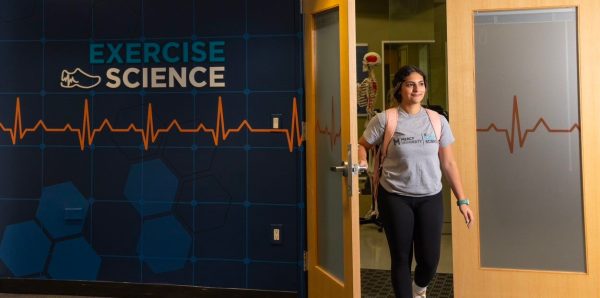Cameras Can Be Required by Faculty in New COVID-19 Addendum
Faculty at Mercy College can now require students to sign in with their video cameras on when attending a virtual class. Yet students can discuss with their professors any personal reasons they might have which would require them to keep their cameras off.
The new guideline was included in Appendix D of the COVID-19 Addendum to the student handbook before the Spring 2021 semester. Appendix D is on the “Virtual Etiquette and Social Media Guidelines.”
Guideline number four reads as followed:
“4. Faculty may require students to sign in with video while attending virtual classes. If a student has questions or concerns regarding the use of video during class, you should discuss with your professor and contact your PACT mentor as well as the Office of ACCESSibility. “
This is one of ten additional guidelines found in Appendix D which seeks to provide Mercy students with the best possible academic experience during the COVID-19 pandemic.
“The reason we want faculty to be able to use cameras in their classrooms is that we know students are more engaged with learning when they can see their professor and their professors can see them. Ultimately, it’s about what’s best for student learning,” said Dr. Nancy Heilbronner, the Interim Associate Provost for Faculty Affairs.
Heilbronner noticed that faculty were becoming increasingly concerned with students not becoming engaged during virtual class. They felt students, who were already going through a difficult time due to the pandemic, were missing out on making the most of their time in the virtual classroom.
A faculty survey conducted during the fall semester showed similar concerns across the faculty by large, according to Heilbronner.
Since the start of the semester, Heilbronner has been happy with what she has heard from the faculty. “From the faculty, the feedback regarding camera usage has been very positive. They think it’s going better and students tend to be more engaged when cameras are on,” stated Helibronner
Heilbronner also stated that, “Although this is not an official Mercy College policy, they are guidelines and principles for virtual learning platforms.”
This allows for the students who have concerns a chance to discuss with their professors and other school resources any issues they might have regarding their cameras being on. This is indicated in the second sentence of guideline four in appendix D.
“We do hope that students take the initiative to speak with their professors. We want students to be their best advocates. I think approaching a faculty member and addressing their concern is the number one best way to do that,” stated Nick Canzano, Assistant Dean of Student Affairs.
He believes it will help benefit students who already have their cameras turned on regularly and promote consistency for everyone. “They have their cameras on, they are being active in the classroom but they are not hearing from any other students and they are not gaining perspective from the other students. Which is a key experience of being able to hear from everyone.”
If a student does have a concern, Canzano encourages them to first talk to their professor and then, if needed, contact their PACT mentor and the Office of ACCESSibility for any further assistance.
Since the Faculty has implemented the guideline in the first weeks of the spring semester, so far they have experienced a positive response.
History professor Andrej Gaspari has had to teach several classes in which a majority of students had their cameras off, and he welcomes the new guidelines.
“I don’t see a downside. As for me, I’d much rather see actual people on the screen than a bunch of blank boxes with names in them,” Gaspari stated.
He admits to the additional challenges of having to teach to the “blank boxes” and even noted that even in the first few weeks of the semester, it appears students who have their cameras on are more active.
This is why he plans on requiring students to have their cameras on during class, with exceptions for students who have unique circumstances. “I think it’s necessary for students and instructors to maintain an interactive relationship in the classroom, and not being able to see how a majority of students are reacting certainly impedes that,” Gaspari said.
Overall, Gaspari feels the new guideline will achieve Mercy College’s goal. That it will provide a more interactive and positive academic experience not just for the teachers, but especially for the students who need it the most.
“I feel it’s appropriate and will prove beneficial to student learning success. The relative anonymity provided by online attendance without a visual component is counterproductive to establishing a good working relationship between student and instructor, as well as undermining the establishment of an interactive student community in the classroom,” Gaspari stated.
Heilbronner discussed that all of the guidelines stated in the COVID-19 addendum to the student handbook resulted from workshops faculty undertook to help make the virtual classroom a better experience. “I think faculty are doing a good job as we learn more about how to navigate these virtual platforms.”
Canzano closed by stating his hopes for the students as they continue to learn remotely during the pandemic.
“I hope students are taking advantage of what they can in this virtual environment. I know it’s not easy, and I talk to a lot of students who say it’s not easy, but I hope they take advantage of all the resources. Utilize the faculty members and have those conversations by taking advantage of everything they can to have the best opportunity.”

James Tiedemann graduated from Mercy College in the May of 2022. He transferred there after graduating from SUNY Orange with his Associate's Degree in...








